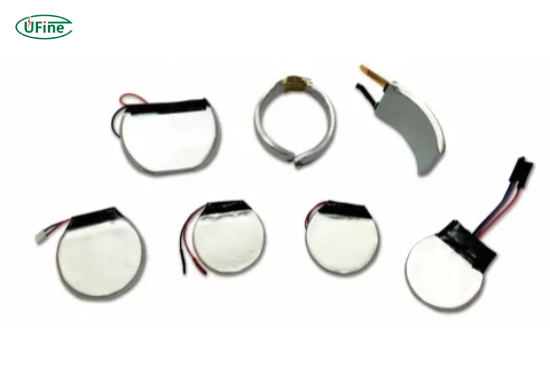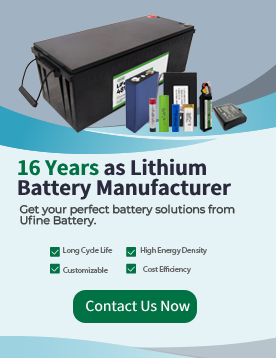A ring recharge battery is a high-performance, reusable energy storage unit designed in a circular or annular shape. It is primarily used in compact, high-demand electronic devices. Unlike traditional rectangular or cylindrical batteries, this unique ring-shaped design allows for space-saving integration, even heat distribution, and 360-degree energy delivery, making it ideal for modern tech applications.
In this article, we’ll examine the design and functionality of ring recharge batteries, their working principles, common use cases, advantages, technical structure, and maintenance tips. If you’re exploring next-gen battery technology or considering implementing ring batteries in your product or project, this is the comprehensive guide you’ve been searching for.
Part 1. What makes a ring recharge battery different from traditional batteries?
Ring recharge batteries differ from standard lithium-ion batteries in several key ways:
- Shape and Structure: As the name suggests, these are shaped like a ring or doughnut (torus). This allows for central mounting, space optimization, or mechanical integration with rotating parts.
- Energy Distribution: Their geometry allows for a more even distribution of electrical flow, reducing hot spots and improving battery health.
- Design Versatility: They can be placed around shafts, lights, or central components, offering designers more flexibility.
- Application-Specific Engineering: Often custom-built for robotics, wearable tech, medical instruments, and aerospace systems.
The ring design isn’t just aesthetic—it’s functional and strategic.
Part 2. How does a ring recharge battery work?
At its core, a ring recharge battery operates on lithium-ion or solid-state battery technology, using rechargeable cells arranged in a circular configuration. Here’s how it works:
- Charging: When connected to a power source, lithium ions move from the positive electrode (cathode) to the negative electrode (anode) through an electrolyte.
- Storing Energy: The ions are stored in the anode material (usually graphite) until the battery is needed.
- Discharging: When the battery powers a device, the ions travel back to the cathode, generating a flow of electrons that powers the load.
- Circular Design Benefit: The ring form enables uniform thermal behaviour, reducing the chances of overheating and supporting multi-directional current delivery.
This process is repeated hundreds of times, making ring batteries reusable, efficient, and sustainable.
Part 3. What are the design elements of a ring recharge battery?
Ring batteries are engineered with precision and highly compact materials. Key design features include:
- Annular Cell Arrangement: Cells are arranged in a circular pattern, often segmented like pie slices.
- Integrated Battery Management System (BMS): Monitors voltage, temperature, and charge cycles for safety and performance.
- Thermal Regulation Layers: Helps to maintain consistent internal temperatures.
- Protective Outer Shell: Impact-resistant casing that prevents physical damage.
- Modular Connectors: These are easily integrated into devices with central shafts, such as motors or lenses.
This type of battery is often custom-designed for specific use cases, which means its development requires high engineering precision.
Part 4. Where are ring recharge batteries used?
Ring batteries are not generic but are used in specialized, high-performance environments. Everyday use cases include:
- Medical Devices: Wearable monitors, surgical tools, and implantable devices benefit from the compact, ergonomic shape.
- Robotics: Used in joints or rotating parts of robotic arms to power sensors and actuators.
- Aerospace and Drones: Lightweight and efficient, ideal for devices with rotating components like gimbals or rotors.
- Wearable Technology: Smartwatches, rings (ironically), and fitness bands use ring batteries to optimize space and comfort.
- Optical Devices: Cameras and telescopes with rotating zoom lenses often use ring-shaped battery packs.
- Electric Motors: Integrated around the axis of rotation to power brushless motors or encoders.
These applications rely on precision power delivery in tight spaces, where the ring design shines.
Part 5. What are the advantages of using ring recharge batteries?
Ring-shaped batteries offer several technical and functional benefits:
- Space Efficiency: Fits around or inside other components to save space.
- Balanced Weight Distribution: Ideal for rotating or wearable devices.
- Improved Cooling: The circular layout helps heat dissipate more evenly.
- Custom Fit: This can be tailored to specific device geometries.
- Energy Efficiency: Modern chemistries allow for high energy density in a small form.
These benefits make ring batteries a premium solution for advanced tech environments.
Part 6. What materials are used in ring recharge batteries?
The performance of a ring battery depends mainly on its material composition:
- Cathode: Lithium cobalt oxide (LCO), lithium iron phosphate (LFP), or nickel manganese cobalt (NMC)
- Anode: Graphite, silicon-carbon composites, or lithium metal
- Electrolyte: Liquid organic solvents or solid-state electrolytes
- Separator: Microporous film that prevents short circuits
- Casing: Aluminum or polymer composite housing for structural strength
Advanced versions may also use solid-state electrolytes, which offer higher safety and longer life cycles.
Part 7. How long do ring recharge batteries last?
Battery life depends on several factors:
- Charge Cycles: Most ring batteries support 400–1000 complete charge cycles.
- Usage Conditions: Extreme temperatures or overuse can shorten lifespan.
- Battery Chemistry: LFP chemistries last longer than LCO.
- Maintenance: Proper charging and discharging habits extend life.
Under normal conditions, a high-quality ring battery can last 2 to 5 years before needing replacement.
Part 8. How do you charge and maintain a ring recharge battery?
Charging and maintenance are critical for battery longevity. Follow these best practices:
- Use the correct charger: Always use a manufacturer-certified charger to avoid damaging the cells.
- Avoid deep discharge: Keep the battery above 20% where possible.
- Temperature control: Charge between 10°C to 35°C for best results.
- Store properly: If not used for a while, store at 50% charge in a cool, dry place.
Regular maintenance not only extends battery life but also maintains optimal performance.
Part 9. What are the challenges of ring recharge battery technology?
While ring batteries offer many benefits, there are also limitations:
- Manufacturing Complexity: Shaping and wiring cells into a ring adds cost and difficulty.
- Limited Mass Availability: Often custom-built, not widely available off-the-shelf.
- Higher Cost: More expensive than standard lithium-ion cells.
- Thermal Management: Although improved, overheating can still occur if not properly managed.
New materials, AI-driven design tools, and 3D-printing innovations address these challenges.
Part 10. What is the future of ring recharge batteries?
As electronics continue to shrink and smart devices become more integrated into daily life, the demand for compact, high-performance batteries like ring recharge will grow. Future developments may include:
- Solid-state ring batteries: Safer, lighter, with higher energy density.
- Flexible ring batteries: Useful in wearables and smart textiles.
- Modular ring cells: Allowing for scalable energy units.
- AI-optimized charging: Adaptive systems that extend battery life in real-time.
The ring recharge battery is not just a trend—it’s a core piece of future tech evolution.
Part 11. FAQs about ring recharge battery
What is a ring recharge battery used for?
A ring recharge battery is used in devices that require compact, circular, or central power integration, such as robotics, medical tools, wearables, and optical tech.
How is a ring battery different from a regular battery?
Its circular shape allows it to be placed around central components, unlike regular rectangular or cylindrical batteries.
Can you replace a standard battery with a ring battery?
Not usually. Ring batteries are application-specific and often designed for a particular device or product.
Is it safe to use ring recharge batteries?
Yes, they include safety features like overcharge protection, thermal control, and voltage regulation when manufactured and used correctly.
How is a ring battery right for my device?
A ring battery may be ideal if your device has space constraints, requires 360-degree placement, or has a rotating central shaft.
Related Tags:
More Articles

How China Dominates the Global LFP Battery Market
China controls 80% of the world's LFP battery production. Discover how government policy, innovation, and cost advantages made it the undisputed leader in EV and energy storage tech.
AI Sparks a New Competition as Battery Giants Race Ahead
AI is accelerating battery R&D, slashing costs, and uncovering breakthrough materials faster than ever. Discover how AI is shaping the future of energy storage.
Are All C Size Rechargeable Batteries the Same?
C-size rechargeable batteries may look alike but differ in chemistry, voltage, and lifespan. This guide helps you choose the best one for your needs.
LFP Batteries: China’s Winning Formula for EV Dominance
Chinese LFP battery giants like CATL and BYD are accelerating overseas. Explore key projects, market trends, and why Tesla and Ford are switching to LFP tech.
2024 Battery Shipments: 1.3TWh, Top 10 Ranked Battery Manufacturers
CATL leads with 491GWh as China dominates 2024's 1.3TWh global battery shipments. See rankings, growth trends, and key players in power & energy storage.




